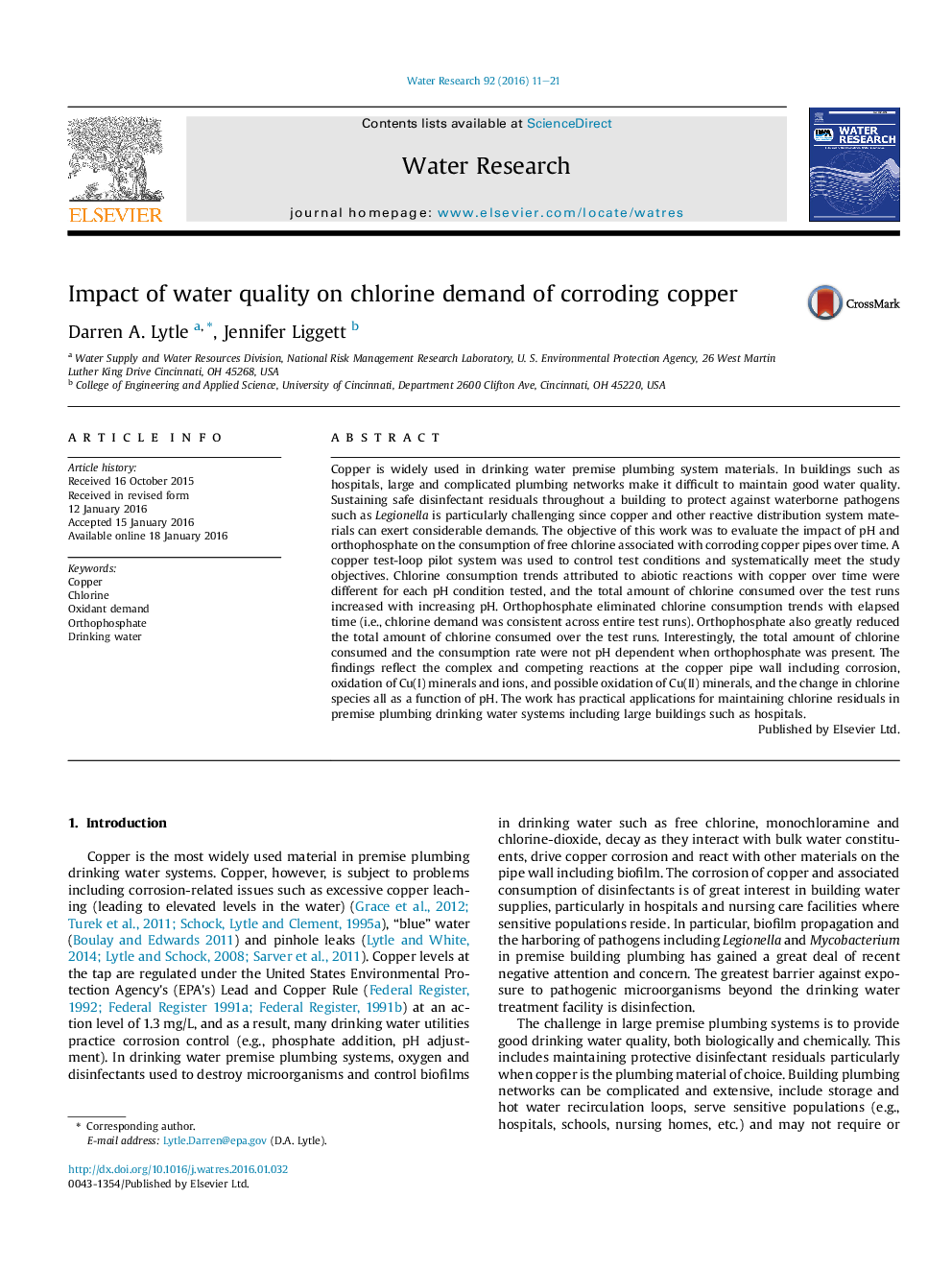| کد مقاله | کد نشریه | سال انتشار | مقاله انگلیسی | نسخه تمام متن |
|---|---|---|---|---|
| 6365240 | 1623076 | 2016 | 11 صفحه PDF | دانلود رایگان |
- The rate which copper concentration decreased over time decreased as pH increased.
- The concentration and total amount of copper released decreased with increasing pH.
- Orthophosphate decreased copper levels at pH 7.2 but increased copper at pH 9.2.
- Chlorine consumption trends over time were different for each pH condition tested.
- Orthophosphate greatly reduced the total amount of chlorine consumed at all pHs.
Copper is widely used in drinking water premise plumbing system materials. In buildings such as hospitals, large and complicated plumbing networks make it difficult to maintain good water quality. Sustaining safe disinfectant residuals throughout a building to protect against waterborne pathogens such as Legionella is particularly challenging since copper and other reactive distribution system materials can exert considerable demands. The objective of this work was to evaluate the impact of pH and orthophosphate on the consumption of free chlorine associated with corroding copper pipes over time. A copper test-loop pilot system was used to control test conditions and systematically meet the study objectives. Chlorine consumption trends attributed to abiotic reactions with copper over time were different for each pH condition tested, and the total amount of chlorine consumed over the test runs increased with increasing pH. Orthophosphate eliminated chlorine consumption trends with elapsed time (i.e., chlorine demand was consistent across entire test runs). Orthophosphate also greatly reduced the total amount of chlorine consumed over the test runs. Interestingly, the total amount of chlorine consumed and the consumption rate were not pH dependent when orthophosphate was present. The findings reflect the complex and competing reactions at the copper pipe wall including corrosion, oxidation of Cu(I) minerals and ions, and possible oxidation of Cu(II) minerals, and the change in chlorine species all as a function of pH. The work has practical applications for maintaining chlorine residuals in premise plumbing drinking water systems including large buildings such as hospitals.
Journal: Water Research - Volume 92, 1 April 2016, Pages 11-21
